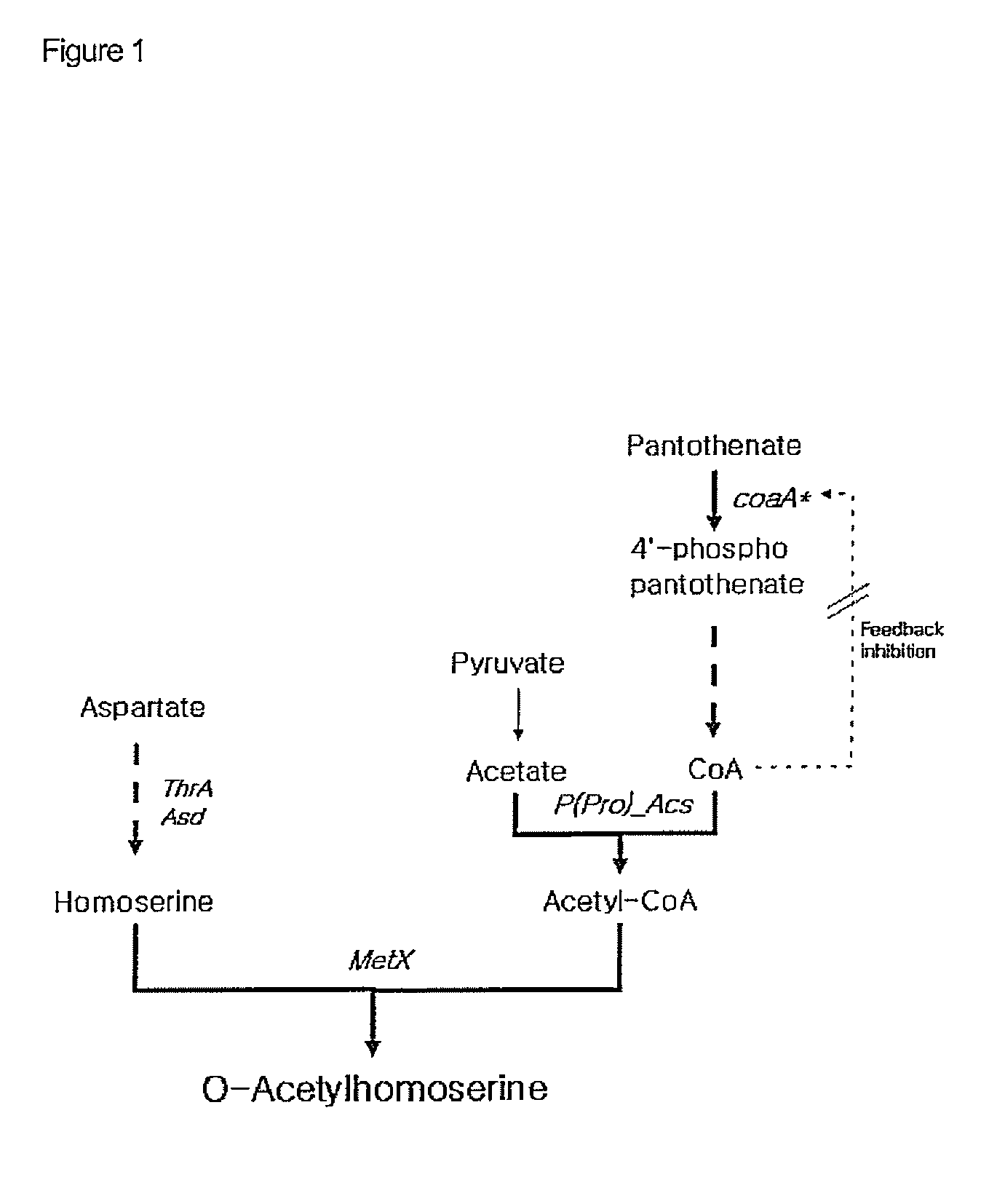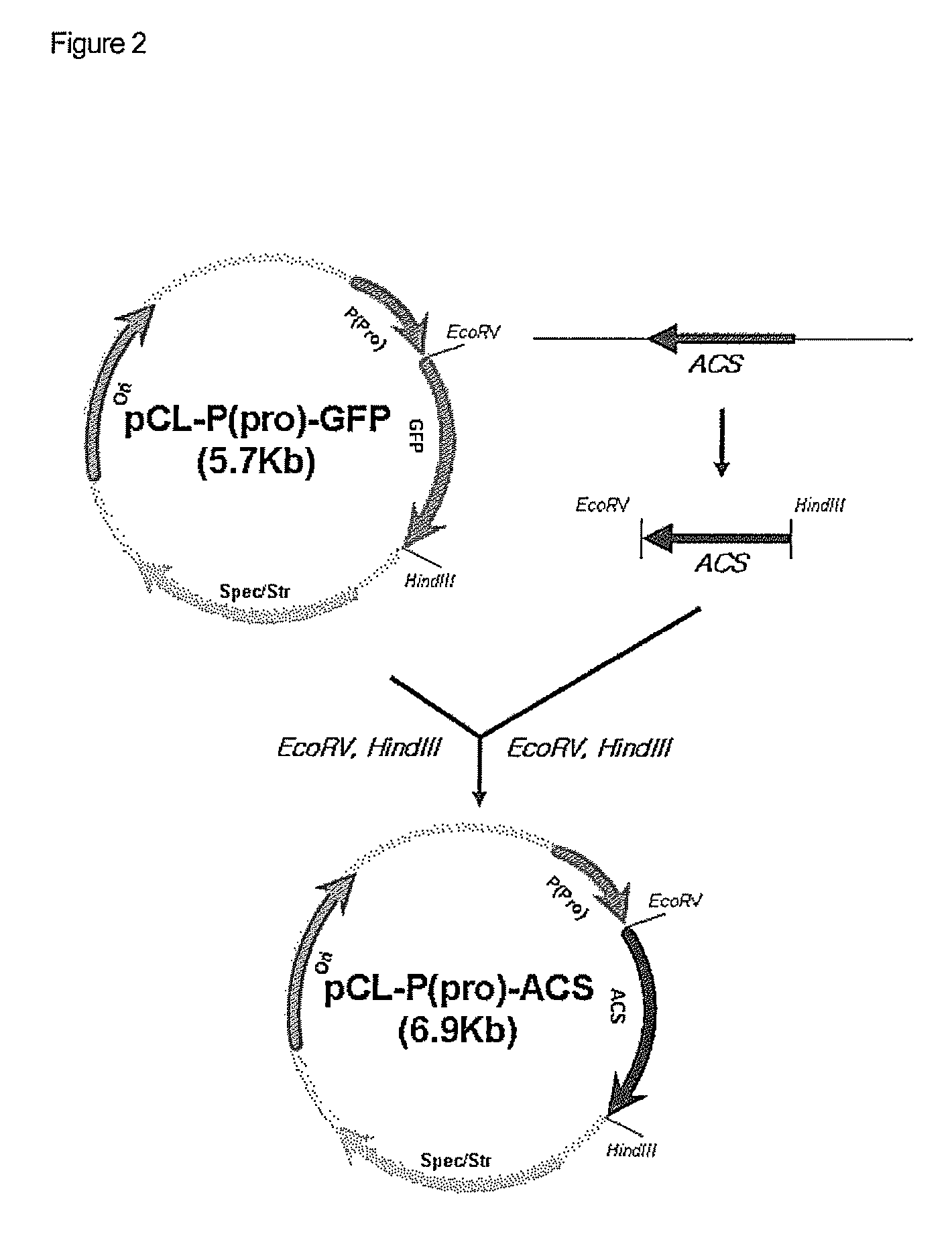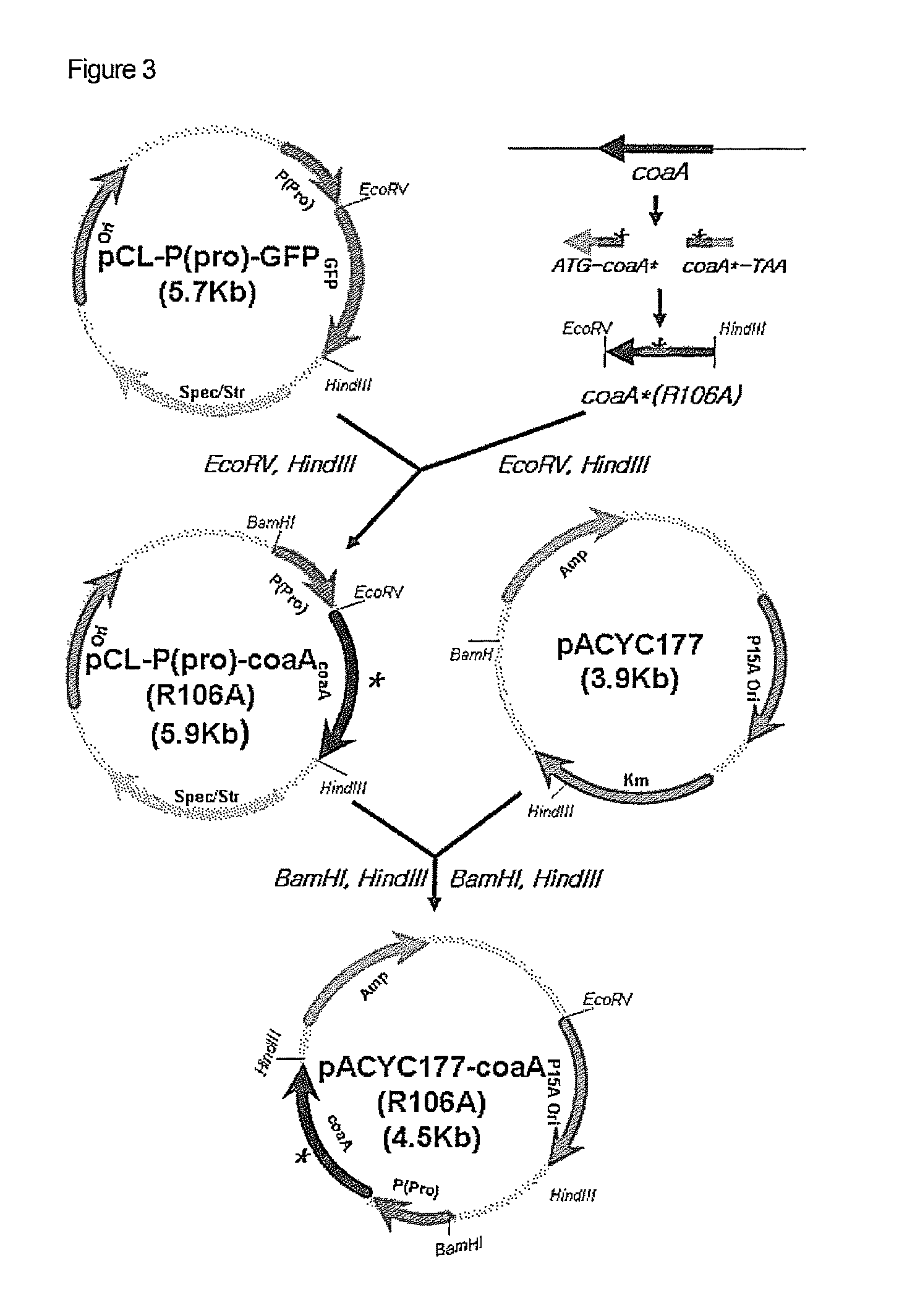Microorganism producing O-acetyl-homoserine and the method of producing O-acetyl-homoserine using the microorganism
a technology of o-acetylhomoserine and microorganisms, which is applied in the field of microorganism strains, can solve the problems of difficult additional process and disadvantageous methionin
- Summary
- Abstract
- Description
- Claims
- Application Information
AI Technical Summary
Benefits of technology
Problems solved by technology
Method used
Image
Examples
example 1
Preparation of O-Acetyl Homoserine Producing Strain
[0069]For acs gene cloning, the acs gene encoding acetyl-CoA synthase was amplified by PCR with the genomic DNA of Escherichia coli W3110 (ATCC 27325) serving as a template. The base sequence of the acs gene was obtained from the GenBank database of the NIH (NCBI-gi:89110790) and is expressed in SEQ ID NO. 7. On the basis of the base sequence, an ORF ranging from ATG to TAA was PCR amplified using a set of primers (SEQ ID NOS. 1 and 2) containing the restriction enzyme sites EcoRV and HindIII while the genomic DNA of Escherichia coli W3110 was used as a template in the presence of the high-fidelity DNA polymerase PfuUltra™ (Stratagene). The PCR was performed with 30 cycles of denaturation at 96° C. for 30 sec, annealing at 50° C. for 30 sec, and extension at 72° C. for 2 min to synthesize an about 2.0 kb acs gene containing EcoRV and HindIII sites therein.
[0070]After digestion with the restriction enzymes E...
example 2
Fermentation for O-Acetyl Homoserine Production
[0079]In order to examine the strains prepared in Example 1 for ability to produce the methionine precursor O-acetyl homoserine, they were cultured in Erlenmeyer flasks.
[0080]For this culture, the O-acetyl-homoserine titer medium shown in Table 1 was employed.
[0081]
TABLE 1Composition of Medium for O-Acetyl-Homoserine ProductionCompositionConcentration(per liter)Glucose60gAmmonium Sulfate17gKH2PO41.0gMgSO4•7H2O0.5gFeSO4•7H2O5mgMnSO4•8H2O5mgZnSO45mgCaCO330gYeast Extract2gMethionine0.15gThreonine0.15g
[0082]Single colonies which were generated on LB plates during incubation overnight at 32° C. were taken with platinum loops and inoculated respectively into 25 mL of the O-acetyl homoserine titer medium, followed by culturing at 32° C. for 42˜64 hrs with shaking at 250 rpm. Each culture was quantitatively analyzed for O-acetyl homoserine using HPLC. The analysis data are summarized in Table 2, below.
[0083]Compared to the control strain CJM-X,...
PUM
| Property | Measurement | Unit |
|---|---|---|
| brittle | aaaaa | aaaaa |
| affinity | aaaaa | aaaaa |
| concentration | aaaaa | aaaaa |
Abstract
Description
Claims
Application Information
 Login to View More
Login to View More - R&D
- Intellectual Property
- Life Sciences
- Materials
- Tech Scout
- Unparalleled Data Quality
- Higher Quality Content
- 60% Fewer Hallucinations
Browse by: Latest US Patents, China's latest patents, Technical Efficacy Thesaurus, Application Domain, Technology Topic, Popular Technical Reports.
© 2025 PatSnap. All rights reserved.Legal|Privacy policy|Modern Slavery Act Transparency Statement|Sitemap|About US| Contact US: help@patsnap.com



